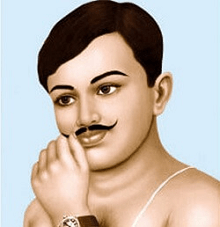Chandra Shekhar Azad
Prominentwriter · 8 months ago
Chandra Shekhar Azad, popularly known as Azad, was an Indian revolutionary who played an important role in India's struggle for independence. He was born on July 23, 1906, in Bhavra, a small village in present-day Madhya Pradesh. His parents were Sitaram Tiwari and Jagrani Devi. Azad's father was a farmer, and his mother was a housewife. From a young age, Azad was deeply influenced by the nationalist movements and the struggle for India's freedom. He was a brilliant student and completed his education in Sanskrit and Persian at Kashi Vidyapeeth in Varanasi. However, he left his studies midway to join the revolutionary movement. Azad became an active member of the Hindustan Socialist Republican Association (HSRA), which aimed to overthrow British rule in India. He was known for his sharp mind and quick reflexes. He played a key role in several revolutionary activities, including the Kakori Train Robbery and the shooting of British officer JP Saunders in Lahore. Azad was known for his fierce determination and uncompromising attitude toward the British rulers. He was always on the run, and the British authorities launched an extensive chase to capture him. However, he remained elusive and managed to evade capture for several years. On February 27, 1931, Azad was surrounded by British police in Alfred Park, Allahabad. Rather than surrendering, he fought bravely and died by suicide, firing his last bullet into his head. He was just 24 years old at the time of his death. Chandra Shekhar Azad's legacy symbolizes resistance and courage in India's struggle for independence. His stories even inspire many young people in India today who continue to fight for justice and equality in a free
